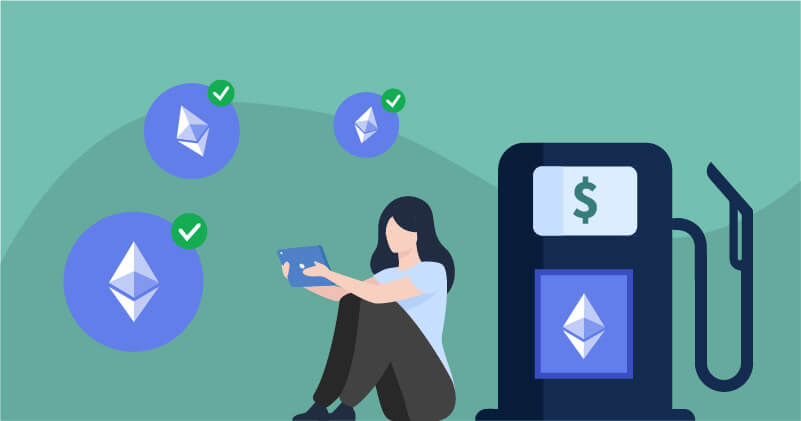What Are Gas Fees in Ethereum, and Why Do They Exist?
If you’ve ever used Ethereum, you’ve probably come across gas fees. These fees can be confusing, especially if you’re new to the world of crypto, but they play a crucial role in keeping the Ethereum network running smoothly. In this blog post, I’ll explain what gas fees are, why they exist, and how they impact your Ethereum transactions. Let’s dive in!
What Are Gas Fees?
Simply put, gas fees are the cost of making transactions or executing smart contracts on the Ethereum blockchain. Think of gas like the fuel you need to make your car run. In Ethereum, gas powers the network by compensating miners (or validators in Ethereum’s case since it moved to a Proof-of-Stake system) for processing transactions and securing the blockchain.
These gas fees are paid in ETH, Ethereum’s native cryptocurrency. Every time you want to send ETH, interact with a decentralized application (dApp), or execute a smart contract, you’re required to pay a certain amount of gas.
Why Do Gas Fees Exist?
Gas fees serve multiple purposes in Ethereum, but the two most important reasons are:
Incentivizing Validators
Ethereum is a decentralized network, which means there’s no central authority managing it. Instead, validators (previously miners before Ethereum’s merge to Proof-of-Stake) handle the heavy lifting of validating transactions and maintaining the blockchain. Gas fees act as a financial incentive, ensuring validators are compensated for their work. Without gas fees, there would be no reason for validators to dedicate computational power and resources to keep the network operational.
Preventing Spam and Overloading
Imagine if sending transactions on Ethereum was free. The network would be bombarded with an overwhelming amount of transactions—many of them possibly spam. Gas fees help prevent this by making sure users have to pay for each transaction. It creates a cost barrier that discourages frivolous activity and ensures that only valuable transactions are processed. This way, the network remains efficient and secure.
How Are Gas Fees Calculated?
Gas fees on Ethereum aren’t fixed—they fluctuate depending on network demand and transaction complexity. Here’s a simplified breakdown of how they work:
Gas Unit
Every action on Ethereum (like sending ETH or interacting with a smart contract) has a gas cost, which is measured in gas units.
Base Fee
This is the minimum amount of gas needed for a transaction, which changes based on how busy the network is.
Tip
Users can add a tip (also called a priority fee) to incentivize validators to prioritize their transaction. If the network is crowded, paying a higher tip can speed up your transaction.
If the network is busy, like during an NFT drop or a DeFi craze, gas fees can skyrocket. That’s why gas fees are often a topic of frustration in the Ethereum community.
Why Are Gas Fees Sometimes So High?
One of the biggest complaints from Ethereum users is the unpredictability of gas fees. When demand on the network is high, gas fees can climb to unreasonable levels, making it expensive to send transactions or use decentralized apps. This happens because there are only so many validators, and when many users want to process transactions at once, validators prioritize the highest bidders. It’s a simple case of supply and demand.
This problem was one of the reasons why Ethereum transitioned to Ethereum 2.0 (the Proof-of-Stake upgrade) and implemented EIP-1559, which aims to make gas fees more predictable by adjusting the base fee automatically and burning a portion of it. However, while these changes have helped, gas fees can still spike during periods of high demand.
Can You Avoid Paying High Gas Fees?
Here are some tips to minimize your gas fees:
Time Your Transactions
Gas fees tend to be lower when network activity is low. Early mornings or weekends sometimes see fewer transactions, leading to lower gas fees.
Use Layer 2 Solutions
Ethereum’s main chain can be pricey, but there are Layer 2 solutions like Arbitrum or Optimism that offer cheaper alternatives by processing transactions off-chain and settling them on Ethereum later.
Monitor Gas Prices
Tools like Etherscan or GasNow can show you current gas prices and help you choose the best time to execute your transaction.
Final Thoughts
Gas fees are a necessary part of the Ethereum ecosystem. While they can be frustrating, especially when prices soar, they ensure the network runs smoothly, securely, and efficiently. As Ethereum continues to evolve, including with Layer 2 scaling solutions and future upgrades, we may see these fees become more manageable.
For now, understanding how gas fees work and knowing when to optimize your transactions can save you time and money. And as Ethereum grows, so will our knowledge of how to navigate its intricacies.

